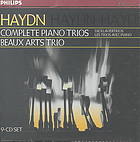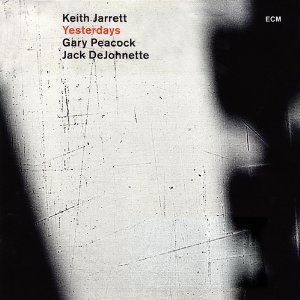Von Gaylord Audio VG-8 Monitor loudspeakers

 In 2013, Von Gaylord Audio introduced the attractive and affordable VG-8 monitor loudspeakers in part to commemorate the company’s 20th anniversary. They chose the VG-8 out of necessity for a more affordable stand mounted model in the company’s lineup of pyramid shaped monitors. Chief designer Ray Leung, was so pleased with the sonic results of the VG-8, he decided to also designate it a Limited Edition model. Leung’s goal was build to create a relatively affordable statement-class product at $5k, that could perform beyond its price category.
In 2013, Von Gaylord Audio introduced the attractive and affordable VG-8 monitor loudspeakers in part to commemorate the company’s 20th anniversary. They chose the VG-8 out of necessity for a more affordable stand mounted model in the company’s lineup of pyramid shaped monitors. Chief designer Ray Leung, was so pleased with the sonic results of the VG-8, he decided to also designate it a Limited Edition model. Leung’s goal was build to create a relatively affordable statement-class product at $5k, that could perform beyond its price category.

I’d heard the VG-8’s along with the company’s Starlet integrated amplifier for the first time at last year’s CES and, as with every CES previously, I was very impressed with the sound of Von Gaylord Audio (above photo). Leung always serves as the set-up man at these events. Always considered among the most affordable systems at these shows, Leung’s simple approach amazingly garners top shelf performance as well as accolades. When I was offered the opportunity to review the Von Gaylord Audio VG-8 loudspeakers, I jumped at it the opportunity and considered it a privilege. This isn’t my first rodeo with Von Gaylord Audio. I reviewed their fabulous The Legend loudspeakers some months back and I really enjoyed their speed, immediacy and dynamic explosiveness. It would be interesting to see if the VG-8’s could come close to attaining similar sonic attributes as its more expensive sibling.
In terms of design, the VG-8 is a simple two-way, rear ported, conventional design weighing in at 27 lbs. It is a stand-mounted design that employs a large custom made 8” fiberglass cone mid/woofer and a custom made 1 ½” titanium tweeter. Sensitivity is rated at 91 dB with an 8 Ohm impedance. The cabinet is made of multi-layered MDF, and special internal bracing for added rigidity. Its exterior is finished in beautiful piano black while dual heavy-duty, five-way binding posts located on its rear make connectivity a breeze.
Set up
The VGA speakers arrived double-boxed and further protected in Styrofoam. They were fairly easy to manage and to unpacked, in order to expose the beautiful sleek cabinet styling. My review samples were gorgeously finished in high-quality piano black. I placed each monitor on a 15” Von Gaylord stand – about 8’ apart and 6’ from my front wall with an ever-so slight tow-in. I used single runs of my reference Jorma Unity speaker cables and the supplied jumpers provided with the VG-8. Electronics included Karan Acoustics KAS450 power amplifier and Karan Acoustics Reference mono preamplifier while digital was the Italian Pi Greco Sinfonia CD player. All cabling was Jorma Design Unity cables.
The VG-8 review pair was a brand spanking new pair that needed to be burned in. As you know I’m not a big fan of going through the burn-in process. So, as I let it play for about a month for burn-in, I didn’t do any serious listening. However, I must say I’ve enjoyed listening to them from time to time during the burn-in process. After about a month, I was ready to begin doing some serious listening. I did most of my listening with my reference Karans’ and toward end of the review I had an opportunity to listen using a beautiful sounding Focus Audio Liszts integrated amplifier. Sporting a sensitivity of 91 dB, the VG-8’s were fairly easy to drive. The Liszts 35-watt (all tube), drove the VG-8’s nicely in my listening room with ease and authority. At trade shows Ray Leung of VGA featured the special synergy of pairing the VG-8’s with the VGA 50-watt Starlet integrated amplifier. In my listening room, the VG-8’s proved sonically engaging whether it was tube or solid-state amplification. Either source provided a sound that was full bodied (a tad more so via the Liszts) with excellent extension considering their diminutive size. The VG-8’s are well accomplished at providing a very focused soundstage and are very transparent whatever the source. Listening to chamber music through the VG-8/Listz combo, in particular, proved a most pleasurable experience.
 The first song I played was the Haydn Piano Trio (Philips 454 099-2) by the Beaux Arts Trio. This is the particular piano trio that I’ve been referencing over the course of many months through a variety of loudspeakers and electronics. Surprisingly, the piano and strings were rendered by the VG-8’s in a way that gave me a sense of listening to a full-range loudspeaker. The piano and the strings were conveyed naturally. The piano was very convincing with solidity and weight and the strings were portrayed delicately with authentic color and tonalities. There was no brightness or edginess on the upper frequencies even when the VG-8’s were pushed to loud levels. The VG-8’s were impressive, revealing layers of detail and nuance much like their bigger brothers The Legend loudspeakers.
The first song I played was the Haydn Piano Trio (Philips 454 099-2) by the Beaux Arts Trio. This is the particular piano trio that I’ve been referencing over the course of many months through a variety of loudspeakers and electronics. Surprisingly, the piano and strings were rendered by the VG-8’s in a way that gave me a sense of listening to a full-range loudspeaker. The piano and the strings were conveyed naturally. The piano was very convincing with solidity and weight and the strings were portrayed delicately with authentic color and tonalities. There was no brightness or edginess on the upper frequencies even when the VG-8’s were pushed to loud levels. The VG-8’s were impressive, revealing layers of detail and nuance much like their bigger brothers The Legend loudspeakers.
 Given that they are stand-mounted loudspeakers one would expect the VG-8’s to image superbly, and they do not disappoint. Mini-monitors are known and admired for their ability to disappear and they provided a great disappearing act. Listening to the Keith Jarrett Trio’s Yesterdays (ECM 2060) was emotional and involving. The VG-8’s ability to image the individual instruments was outstanding and the speakers vanished creating a three-dimensional soundstage that gave the illusion that the trio was performing right in front of me. Keith Jarrett’s piano had a wonderful romantic sound with such realism that I was deeply drawn into the music. One of my favorite bassists, Gary Peacock on the double was equally strong. The VG-8’s rendered the double bass with control, weight and a beautiful transparency. I could hear each note clearly and I was pulled into the music. The legendary cymbal strikes of Jack DeJohnette were rendered with remarkable tones and hues. The VG-8’s imbued a heightened sense of gracefulness to this very special recording. When mini-monitor loudspeakers sound this good from top to bottom, I often ask myself “Do I really need full-range loudspeaker?”
Given that they are stand-mounted loudspeakers one would expect the VG-8’s to image superbly, and they do not disappoint. Mini-monitors are known and admired for their ability to disappear and they provided a great disappearing act. Listening to the Keith Jarrett Trio’s Yesterdays (ECM 2060) was emotional and involving. The VG-8’s ability to image the individual instruments was outstanding and the speakers vanished creating a three-dimensional soundstage that gave the illusion that the trio was performing right in front of me. Keith Jarrett’s piano had a wonderful romantic sound with such realism that I was deeply drawn into the music. One of my favorite bassists, Gary Peacock on the double was equally strong. The VG-8’s rendered the double bass with control, weight and a beautiful transparency. I could hear each note clearly and I was pulled into the music. The legendary cymbal strikes of Jack DeJohnette were rendered with remarkable tones and hues. The VG-8’s imbued a heightened sense of gracefulness to this very special recording. When mini-monitor loudspeakers sound this good from top to bottom, I often ask myself “Do I really need full-range loudspeaker?”
The Von Gaylord Audio VG-8’s are wonderful loudspeakers on many levels. Asking $4,950 for a pair of stand-mounted monitors may seem expensive but for what they accomplish on a musical scale, I would consider them very affordable. Nowadays, it’s not uncommon to find mini monitors in excess of $20k! In terms of versatility, the VG-8’s sounded great strapped to either my power house (solid-state) Karans or the Focus Audio Lizst (tube) integrated amplifier. They performed beautifully no matter the source and in many areas we audiophiles deem important, offer a performance similar to their bigger brothers The Legend loudspeakers. I personally enjoyed the performance of the VG-8’s so much that I couldn’t let them go. I bought the review samples. Need I say more?

![]()
VG-8 Specifications:
2-way speaker system featuring:
• 8 inch fiberglass cone woofer
• 1 ½ titanium dome tweeter
• Ported design
• Time aligned driver orientation
• Bi-wire ready
• Gold plated binding posts
• Piano black with a durable high gloss finish
• Frequency response : 20Hz to 20kHz + 3db
• Sensitivity : 91db
• Impedance: 8 ohms
• Power requirement : 35 to 400 watts
• Overall Dimensions : 12 inch width x 16 inch height x 14 1/2 inch depth
• Weight: 27 lbs
Price : $4,995.00
Contact:
1050 Riverside Parkway, Suite 100
West Sacramento, CA., 95605, USA
Phone: (415) 328-9572
Fax: (425) 969-9579
Website: www.vongaylordaudio.com
Email: info@vongaylordaudio.com
Stereo Times Masthead
Publisher/Founder
Clement Perry
Editor
Dave Thomas
Senior Editors
Frank Alles, Mike Girardi, Russell Lichter, Terry London, Moreno Mitchell, Paul Szabady, Bill Wells, Mike Wright, and Stephen Yan,
Current Contributors
David Abramson, Tim Barrall, Dave Allison, Ron Cook, Lewis Dardick, John Hoffman, Dan Secula, Don Shaulis, Greg Simmons, Eric Teh, Greg Voth, Richard Willie, Ed Van Winkle, Rob Dockery, Richard Doron, and Daveed Turek
Site Management Clement Perry
Ad Designer: Martin Perry





Be the first to comment on: Von Gaylord Audio VG-8 Monitor loudspeakers